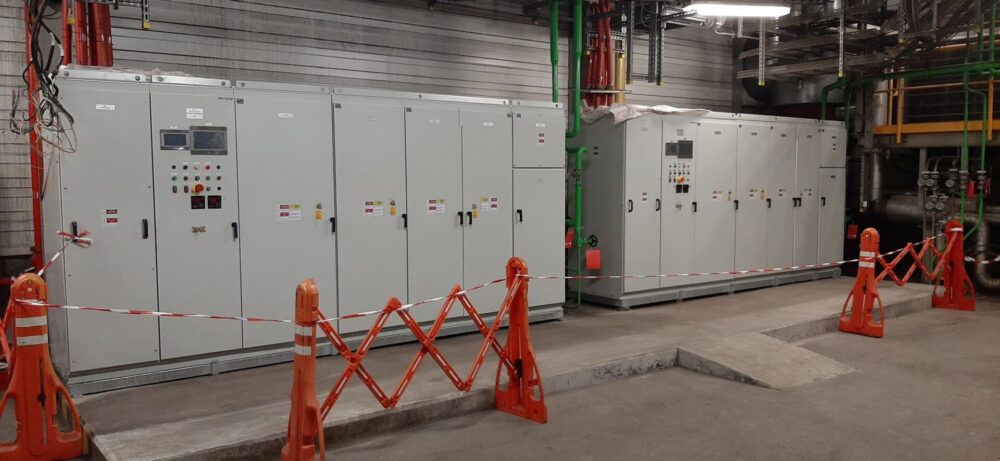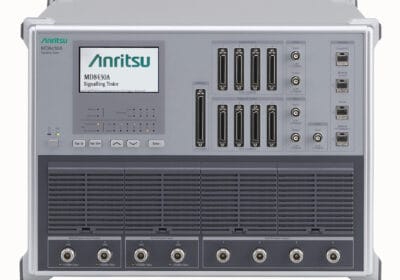~ WEG supplies variable speed drives (VSDs) for critical power plant ~
The Knippegroen power plant — commissioned by Electrabel in December 2010 — is located on the site of the steel producer ArcelorMittal in Ghent, Belgium. The power plant serves two needs: to meet the large long-term electricity demands of the steel company and to provide conversion into electricity for the residual gases that are formed during the steel production process. Here’s how leading motor and automation manufacturer WEG and ERIKS, an international service partner for industrial companies, cooperated to supply critical equipment to Engie’s Knippegroen power plant.
Blast furnace gas is a by-product of steel production in a modern blast furnace. It is released during the reduction of iron ore with coke to pig iron. Knippegroen has the best available technology to optimally convert ArcelorMittal Ghent’s blast furnace and converter gas into electricity. The plant has a capacity of 315 MW that allows it to produce 2.4 terrawatt hours of electricity annually, which corresponds to the annual consumption of about 700,000 families.
It is critical that there are no equipment failures in Engie’s power plants to maintain a reliable supply. However, at Knippegroen, engineers experienced several breakdowns with its variable speed drives (VSDs). To have a good flame inside the boiler, it is necessary to add a lot of oxygen. That’s why the two combustion air fans, piloted by a VSD, are so important. When one fan is lost because of VSD failure, it is only possible to produce a maximum of 60 per cent of the usual capacity. The financial implications of this loss of production can be severe.
Reliable VSD supply
ERIKS, who were approached by Engie, required the support of WEG, a motors and drives specialist, to replace the failing VSDs. For the project, WEG supplied its reliable medium voltage range of VSDs — specifically the MVW01, which consists of a cooling system and an electric panel, along with a thermal dissipation design that allows a greater range of power output.
WEG’s drives run alongside two electric motors that power fans to provide combustion air. The excess heat is generated in a furnace, housed in the same building as the VSDs, all owned by Engie Electrabel. The fans are responsible for pushing oxygen into the boiler to keep it burning, which in turn produces hot water, and therefore steam, to drive the turbines.
Passing the test
This operation requires the equipment, such as WEG’s MVW01 drive, to be running around the clock without failure. To prevent breakdown and to ensure reliability, WEG undertook rigorous testing of its drives before installation. Unlike some drive and motor manufacturers, WEG was able to test its medium voltage drives at full load.
This is uncommon in the industry, as not many companies have the capacity to facilitate the testing of large frequency inverters. To put this into perspective, the drives are at least two metres in width, one metre in depth and eight metres in length.
“These are the first medium voltage VSDs that WEG has installed in Belgium,” explained Werner Joosens, project manager at WEG Benelux. “WEG has always supplied drives in the region, but this is the first over 1000 volts (V). With the teamwork of WEG’s biggest Belgian distributor, ERIKS, the project was successful, and has been operating since its commissioning at the end of 2021.
“The drives had to be compact for them to fit into the existing room,” continued Joosens. “Testing also had to be approved, which we completed in Brazil at full load, and safety was at the forefront of our concerns. This is because medium voltage is far more dangerous than low voltage, so for example, there’s a special safety procedure just to open the medium voltage VSD.”
“Before the Knippegroen plant came into operation, the steel producer’s blast furnace gas was used in the Rodenhuize power station, explained Steven Vervaeke, project engineer at Engie. “However, several production units of this plant were closed when they reached the end of their service life.
“The remaining unit in Rodenhuize, the Max Green biomass plant, still serves as a back-up for the use of the residual gases, for example when the Knippegroen plant is shut down due to maintenance work. Thanks to its higher efficiency, the Knippegroen plant emits 70,000 tonnes less CO2 annually when burning the residual gases, which previously took place in the Rodenhuize plant.
At Engie we are committed to accelerating the transition towards a carbon-neutral world, through reduced energy consumption and more environmentally-friendly solutions, so couldn’t be happier that Knippegroen is now performing optimally.”
Thanks to the successful VSD upgrade project and smooth collaboration between WEG, ERIKS and Engie, Knippegroen continues to support ArcelorMittal’s goals to meet the long-term large electricity demand of the steel company and to provide effective and reliable blast furnace gas conversion into electricity.
WEG is a leading manufacturer of motors and drives, to view the company’s full range of drives, visit www.weg.net.








